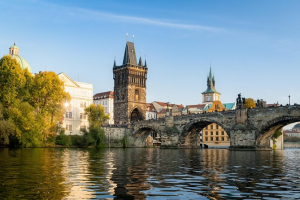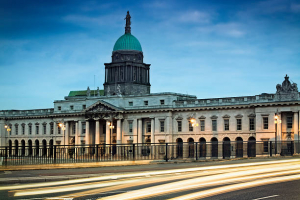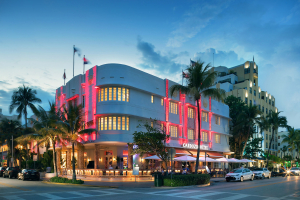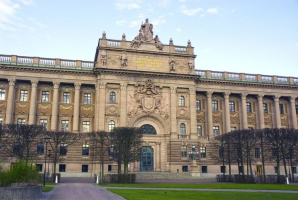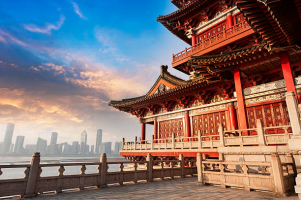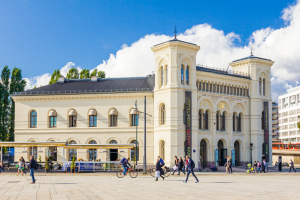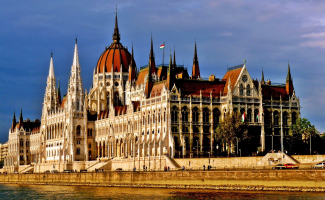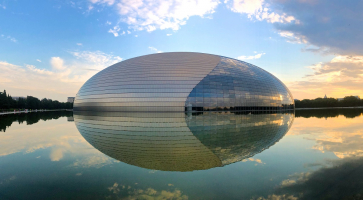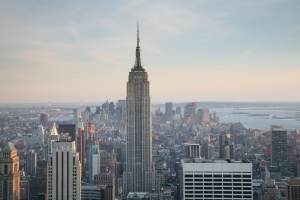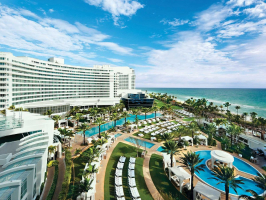Top 13 Buildings That Lay Bare Scotland’s Soul
Scotland is a minor nation in the United Kingdom. Scottish architecture may be dated back to the Neolithic era and has evolved ever since. From early ... read more...settlements to spectacular stone castles in the late Middle Ages, church architecture ornamented with Romanesque form, huge technical wonders in the nineteenth century, and the most outstanding modern buildings that stand strong today along the Clyde. Let's explore the greatest structures that reveal Scotland's spirit now.
-
Craigievar Castle is a pinkish harled castle or fortified country house in Aberdeenshire, Scotland, 6 miles (9.7 km) south of Alford. It was the seat of Clan Sempill for 350 years until 1963, when the property was bequeathed to the National Trust for Scotland by William Forbes-Sempill, 19th Lord Sempill, in the 1960s. The site is among the magnificent undulating foothills of the Grampian Mountains, and the contrast between the large lower-level structure and the carefully carved many turrets, gargoyles, and lofty corbelling work to produce a traditional fairytale image.
A volunteer uncovered what seems to be the property's original oak door in early 2019; it was rebuilt in 1825 and was thought to be lost until 2019. The door was eventually repaired and displayed. By 2013, the castle, its gardens, and an estate of over 200 acres (81 ha) of neighboring farms and woods had celebrated their 50th year as a National Trust for Scotland property. Visits to the castle were permitted from Easter, or the first of April, whichever came first, through the end of September.
In 2018, the castle was available for guided tours on Fridays through Tuesdays from April to June; the gardens were open all year. In 2019, the site had 24,072 visits. The National Trust continued to provide tours of the castle in 2019, but the estate was closed in 2020 because to the COVID-19 epidemic in the UK; when it reopened in July, visitors were limited to the grounds for the remainder of the season. A September 2020 study notes that the castle "takes a main place among the examples of what is known as the fourth or L era, from the shape of ground plan upon which virtually all the Scottish castles of that age".
Location: Craigievar, Alford AB33 8JF, Scotland
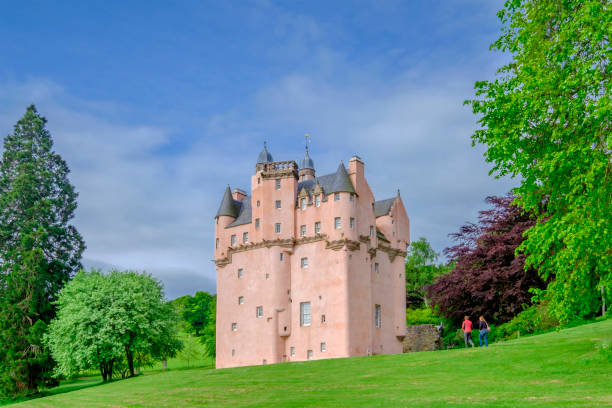
istockphoto 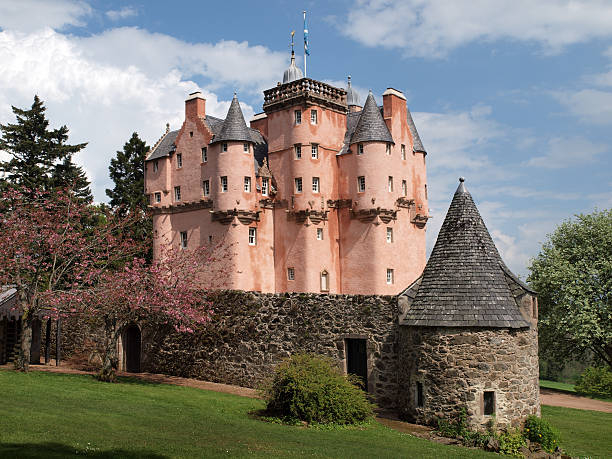
istockphoto -
Falkland Residence is a royal palace of the Scottish Kings in Falkland, Fife, Scotland. It was a favorite haunt of Mary, Queen of Scots, offering a respite from political and religious upheaval. Today, it is led by Ninian Stuart, who delegated the majority of his responsibilities to The National Trust for Scotland. The Chapel Royal at the Palace is dedicated to St. Thomas the Apostle and is available to the public for Catholic devotion.
Falkland was built on a square layout around a central courtyard, mostly by French masons and dazzling with Renaissance details up to current with the newest architectural styles of the French court. The south courtyard front features some of the most interesting stone sculptures of its period in Britain, ranging from young women to veteran warriors placed amid lush wreaths. Nonetheless, the major street frontage is disguised. It is in Late Gothic style, prompting historians to believe it is older than the Renaissance courtyard on the other side; both were erected at the same time, with the palace finished in 1541. The facade is merely a somber, churchlike counterpoint to the more frivolous splendors within.
The courtyard was initially finished on the north side with a great hall. The 3rd Marquis of Bute excavated and laid out the footprint of the structure using paving slabs. The repaired footings of Falkland Castle are located outside this region. The location of the 17th-century Nether Palace or Castlestead is known from a plan and elevation created by Alexander Edward.
Location: Falkland, Fife, Scotland
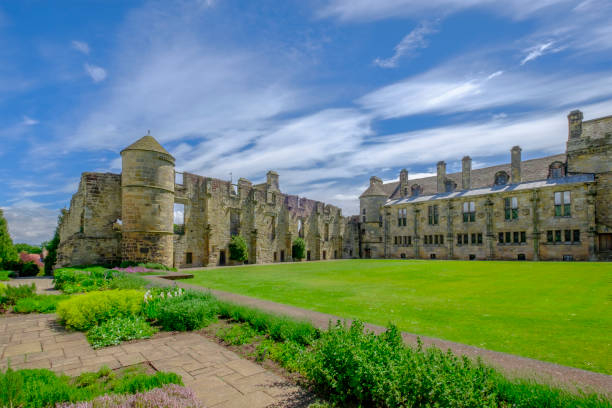
istockphoto 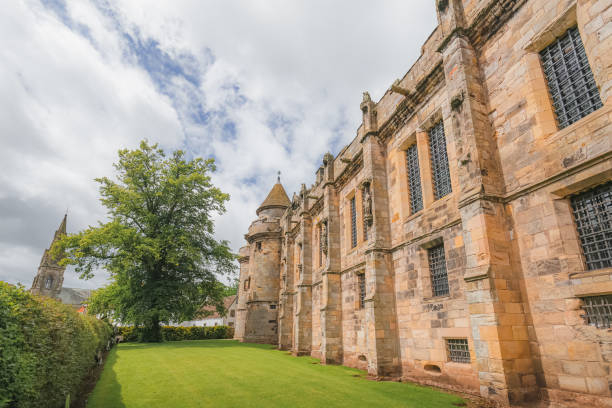
istockphoto -
Romanesque architecture extended over Europe as a truly cosmopolitan style, with a remarkable variety of local variants. Dalmeny Church in Edinburgh is Scotland's best-preserved Romanesque parish church. It features the round-apse layout characteristic of many parish churches from the early to mid-12th centuries, but its elaborate sculpture indicates that it is part of a separate local group that includes the abbey at nearby Dunfermline. It was erected for the local landowner, Earl Gospatric, from of sandstone blocks, which has contributed to its endurance. It was finished in 1140.
Although its western tower was restored from 1922 to 1927 by architect P. MacGregor Chalmers and rebuilt to Alfred Greig's designs in 1937, the rest of the building is very much as Gospatric would have known it, with its hefty construction and vaulted chancel and apse giving its interior a highly memorable sense of enclosure. Dalmeny's crowning splendor is its ornate south gateway.
The stones around the arch are filled with a dazzling array of images, many of which are taken from the medieval bestiary. There are centaurs, lustful lovers, and the tree of life, all of which have symbolic meanings. Building churches was a means of trying to ensure God’s approval, and, with a keen eye to the afterlife, Gospatric commissioned a decorated sarcophagus, which was moved from the church to the graveyard during the Reformation and now stands as a timely reminder of mortality.
Location: Main Street, Dalmeny EH30 9TT, Scotland
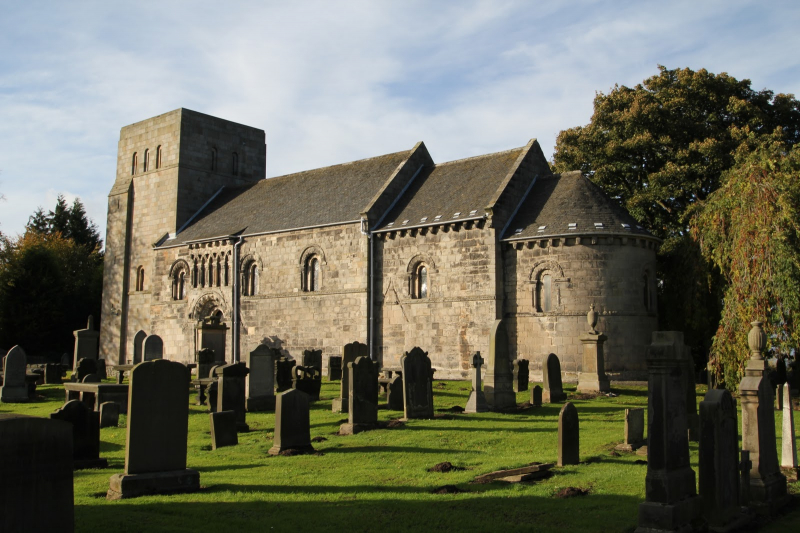
istockphoto 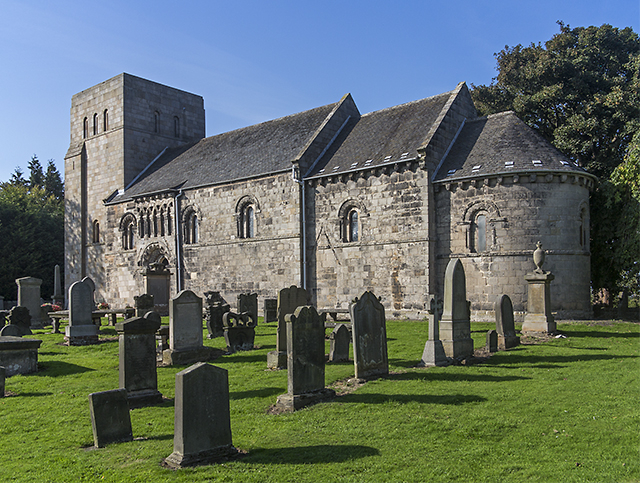
istockphoto -
The Royal High School of Edinburgh (RHS) is a co-educational school run by the City of Edinburgh Council. The institution was founded in 1128 and is one of Scotland's oldest. It serves 1,200 students from four feeder primary schools in the city's northwestern outskirts: Blackhall Primary School, Clermiston Primary School, Cramond Primary School, and Davidson's Mains Primary School. Edinburgh established its image as the "Athens of the North" with the construction of the Royal High School on a rocky ledge above its heart. The intricate massing of Greek Revival components in the school was fully fitting for a city famed for the "democratic intellect" heralded by the cultural ferment of the Scottish Enlightenment.
The Royal High School was the structure that cemented Thomas Hamilton's reputation as a master of the Classical language of architecture. Hamilton, the son of a local mason, never visited Greece, but his integration of the central "temple" core of the structure with Doric colonnades and pavilions is masterful.
The location atop Calton Hill, directly below the Parthenon-inspired National Monument, is so well interwoven with its surroundings that it nearly looks to be hewn from the living rock. The main emphasis of the structure (finished in 1829) is the galleried central hall with gilded columns, with embellishments of Grecian themes such as anthemions, palmettes, and rosettes. The massively coffered ceiling, cleverly lighted from above by windows at gallery level, appears to float rather than weigh heavily, and the whole result pays beautiful respect to Classical origins without being slavish or pedantic. The Royal High School is an important part in making Edinburgh the best Neoclassical city in the world.
Location: 41 East Barnton Avenue, Edinburgh EH4 6JP, Scotland
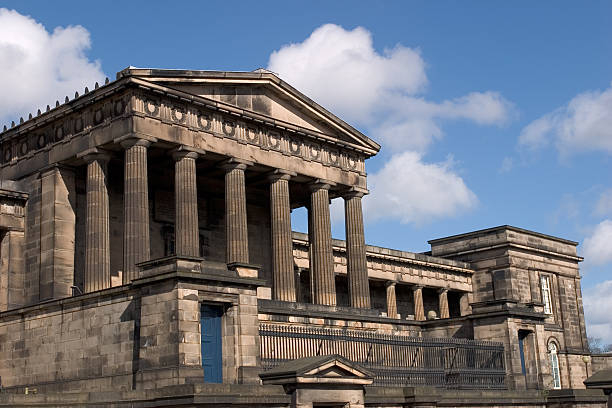
istockphoto 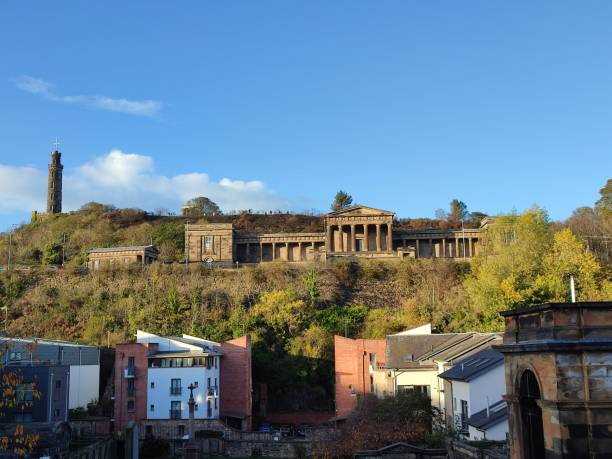
istockphoto -
The Scottish Parliament Building, located inside the UNESCO World Heritage Site in downtown Edinburgh, is the home of the Scottish Parliament at Holyrood. The building's construction began in June 1999, and the first discussion in the new facility was conducted on September 7, 2004, by Members of the Scottish Parliament (MSPs). Queen Elizabeth II officially opened the building on October 9, 2004. Enric Miralles, the building's Spanish architect, died before it was finished.
The Scottish Parliament's committee rooms and debating chamber were situated in the General Assembly Hall of the Church of Scotland on The Mound in Edinburgh from 1999 until the inauguration of the new facility in 2004. Office and administrative space for Parliament was provided in buildings leased by the City of Edinburgh Council. The new Scottish Parliament Building combined these disparate aspects into a purpose-built legislative complex that houses 129 MSPs as well as over 1,000 employees and government officials.
The probe, which finished in September 2004, criticized the whole project's administration, from the realization of cost increases to the manner in which key design revisions were handled. Despite these issues and a mixed public reception, architectural experts and critics praised the structure. The structure was designed to create a poetic unity between the Scottish environment, its people, and culture, as well as the city of Edinburgh. The Parliament Building received multiple prizes, including the Stirling Prize in 2005, and has been characterized as "a tour de force of arts and crafts and excellence without precedent in the previous 100 years of British architecture" by landscape architect Charles Jencks.
Location: Holyrood, Edinburgh, EH99 1SP, Scotland

istockphoto 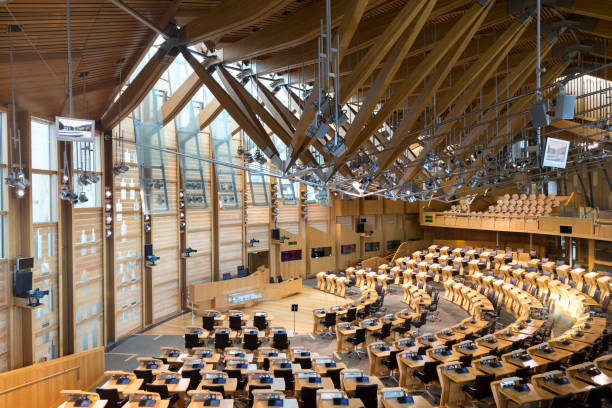
istockphoto -
Although Glasgow is rightfully recognized for the work of Charles Rennie Mackintosh, it also produced another world-class architect in Alexander "Greek" Thomson at an earlier time. Although his ideas were once seen as tough and demanding, public opinion has warmed to his own style of architectural eclecticism. Thomson never left Britain, and despite his appellation "Greek", he used published materials depicting Egyptian and Indian architecture as well as those depicting classical structures. Unlike most of his British colleagues, he was willing to experiment boldly with established forms, adding daring aspects and compositions that are most closely related to the work of Karl Friedrich Schinkel in Berlin.
Despite being erected on a challenging, sloping location, St. Vincent Street Church (finished in 1859) displays Thomson at his peak. It is a work of architectural massing that elevates the typical classical porticoed form onto a massive two-story base. An amazing tower, positioned in strong asymmetry, combines Assyrian and Egyptian elements and culminates in a fluted egg-shaped dome of Indian origin. While the front of the building appears almost unnervingly huge, the utilization of top-lit rooms lends the interior a bewitching lightness. This is a structure where every aspect has been examined from a distinct perspective, with a range of finely resolved characteristics such as attenuated cast-iron columns culminating in capitals that subvert the classic acanthus shape.
Location: 265 St Vincent Street, Glasgow G2 4, Scotland
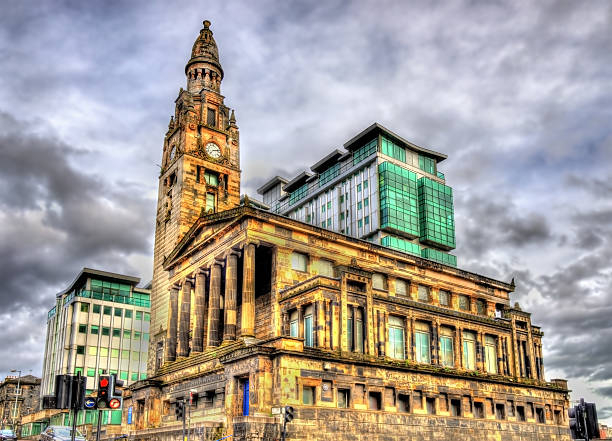
istockphoto 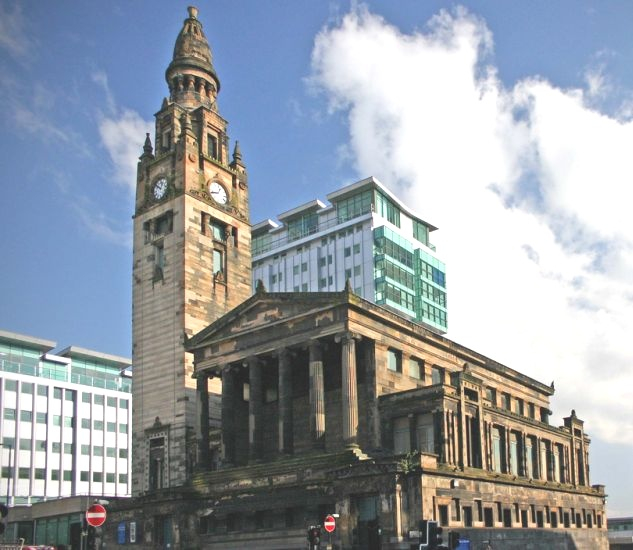
istockphoto -
While most remarkable structures are one-of-a-kind, some are fascinating because they are common. Tenement House (145 Buccleuch Street) in Glasgow belongs into this later group. It is a time capsule that depicts an exceptional vignette of life at the turn of the nineteenth and beginning of the twentieth centuries. Its ordinariness is what makes it so significant.
It was built in 1892 and lived in by Agnes Toward, a shorthand typist, from 1911 until 1965. It retains the conventional elements of the tenement—an apartment in a small block of identical homes. The four-story block dwelling is made of the red sandstone that characterizes most of Glasgow's architecture from this era.
The home is typical of tenement blocks erected around the city in the boom years before World War I, with a centrally situated "close" (common entry) enabling access to all flats by a stone stair. It has been owned by the National Trust for Scotland since 1982, and elements such as gas lighting, a coal-fired cooking range, and a bed-recess off the kitchen have been preserved. It is also furnished with several of Toward's belongings, such as a rosewood upright piano and a grandfather clock. It gives visitors an idea of how regular people lived in one of Europe's great industrial capitals.
Location: 145 Buccleuch Street, Glasgow G3 6QN, Scotland
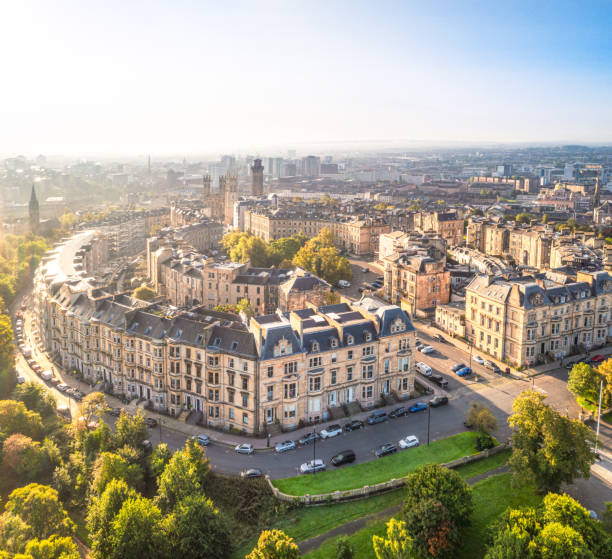
istockphoto 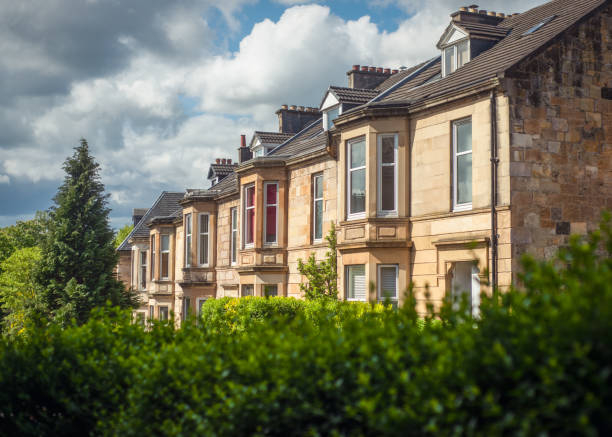
istockphoto -
The Glasgow Institution of Art (GSA; Scottish Gaelic: Sgoil-ealain Ghlaschu) is a Scottish higher education art school that offers undergraduate degrees, postgraduate awards (both taught and research-led), and PhDs in architecture, fine art, and design. The school is based in a variety of buildings in the heart of Glasgow, on Garnethill, an area initially built in the early 1800s by William Harley of Blythswood Hill. Charles Rennie Mackintosh designed the most notable of its structures in stages between 1896 and 1909. The namesake Mackintosh Building quickly became one of the city's most recognizable icons, standing for more than a century. It represents the Modern Style (British Art Nouveau style).
The innovative utilization of windows is one of the building's most remarkable aspects. They are tall and slim, echoing the size of the rooms within the structure, with varied sized windows in each. Natural and artificial light are used to their full potential inside the school. As an artist, Mackintosh knew the value of being able to work with natural light. The east wing of the school was constructed between 1897 and 1899, and the west wing between 1907 and 1909. The attic studios in the new structure were so popular that comparable rooms were built to the east wing. The western gateway is more ornate than the remainder of the structure, with a gradation of stone sculptures reminiscent of an Egyptian pyramid's entrance.
It's an intriguing foreshadowing of Art Deco design. The formidable outside walls of the structure owe an homage to the grandeur of the Scottish Baronial heritage, yet the interior areas are pleasantly contemporary. It is a structure of stark contrasts: the façade seems austere, while the interior appears friendly. The structure was extensively damaged by fire in May 2014 and destroyed by a second fire in June 2018, leaving just the burnt-out shell. The GSA was ranked 11th in the QS World Rankings for Art and Design in 2022.
Location: Glasgow, Scotland

istockphoto 
istockphoto -
Hill House is a structure designed by architects and designers Charles and Margaret Macdonald Mackintosh in Helensburgh, Scotland. The home is a noteworthy example of Modern Style architecture (British Art Nouveau style). In 1902-1904, it was conceived and erected for publisher Walter Blackie. Mackintosh also designed the inside of the house, including the furnishings and fixtures. The house was bequeathed to the National Trust for Scotland (NTS) in 1982, and it is now maintained and available to tourists.
The building's homogeneous and drab exterior treatment merges perfectly with the cloudy sky. The entirely asymmetrical design creates various roof levels and shapes, and it also reflects Mackintosh's admiration for A. W. N. Pugin's gorgeous utility, in which the outside contour emerges from the inside layout. The sparse décor, thick walls, and rectangular and square windows convey a sturdy, somber architecture. The building's outward characteristics are practically the polar opposite of its pleasant, exotic, well designed, and smooth inside. Again, Mackintosh applies Pugin's philosophy by limiting outside adornment in order to highlight interior design: the passage from the outside world into a safe, magnificent inner setting. Paint study of the harling on the outside suggests that it was originally whitewashed pale grey.
The mansion mixed the conventional 'femininity' of an intimate, internal area with the'masculinity' of the external public realm, both of which were seldom utilised throughout the building's interior. Bringing the male features to the inside, according to Mackintosh, would break away from the overly ornamented, wholly feminine traditional interiors. This enabled him to express various emotions and sensations based on the objective of each location. When it was important to accomplish a thorough experience shift from one place to another, Mackintosh employed diverse materials, colors, and lighting. All in such a beautiful and well-planned manner that the lack of one would spoil the other.
Location: Upper Colquhoun Street, Helensburgh G84 9AJ, Scotland
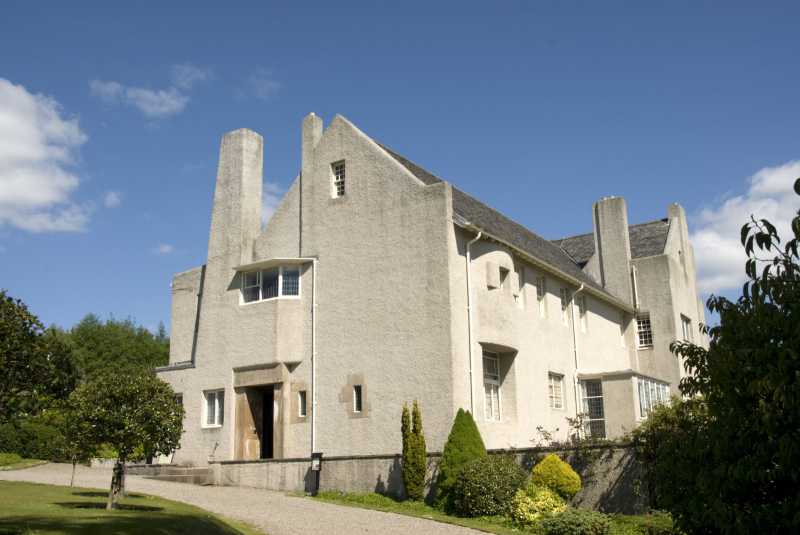
istockphoto 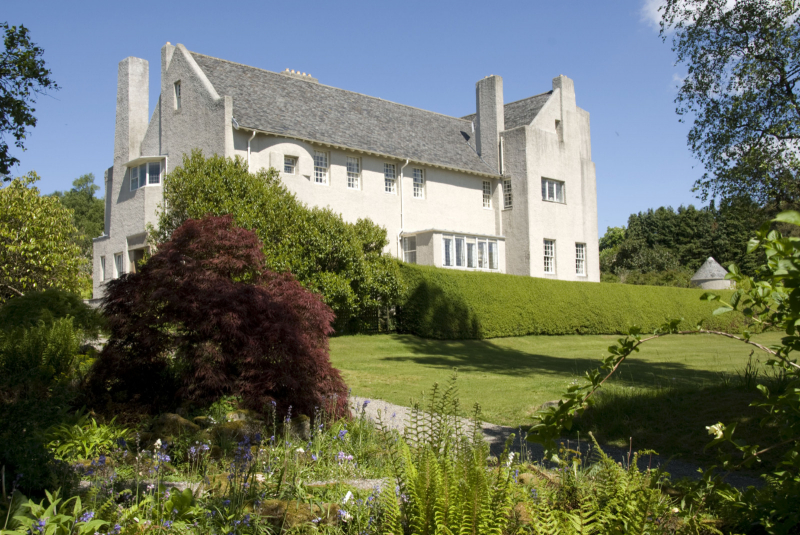
istockphoto -
One of the most sculptural structures of late-century Britain is set among the undulating upland of the Scottish Borders. The Design Studio was designed for Bernat Klein, the famed Yugoslavian-born textile designer, by Yorkshire-born Peter Womersley, a gifted but elusive Modernist architect. Womersley also designed Klein's geometric mansion, High Sunderland, which sits nearby. Womersley's concern with diverse textures and structural adventure is reflected in the Design Studio's use of reinforced concrete and glass over a brick base-course, with the floors defined by huge and daringly oversailing beams. The equilibrium between horizontal and vertical, as well as solid and empty, appears to be excellent.
The structure, which was finished in 1972 and is surrounded by a gnarled battalion of wind-bent trees and situated on a step of level land amid undulating fields, has harsh lines that stand in stark yet sympathetic juxtaposition to its environment. The first-floor walkway terminates on an earthen mound—a serendipitous practical addition mandated by the planning authorities to offer an alternate fire escape—that serves as a dramatic emblem of the building's tight link with the terrain. The Bernat Klein Design Studio, with its neatly designed suite of workplaces, illustrates Womersley's interest with natural forms, shifting light, and color.
Location: Selkirk, Scotland
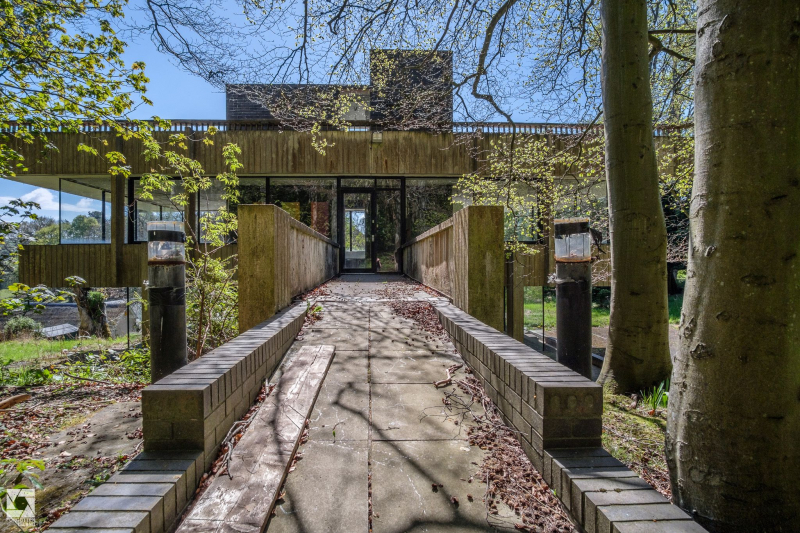
istockphoto 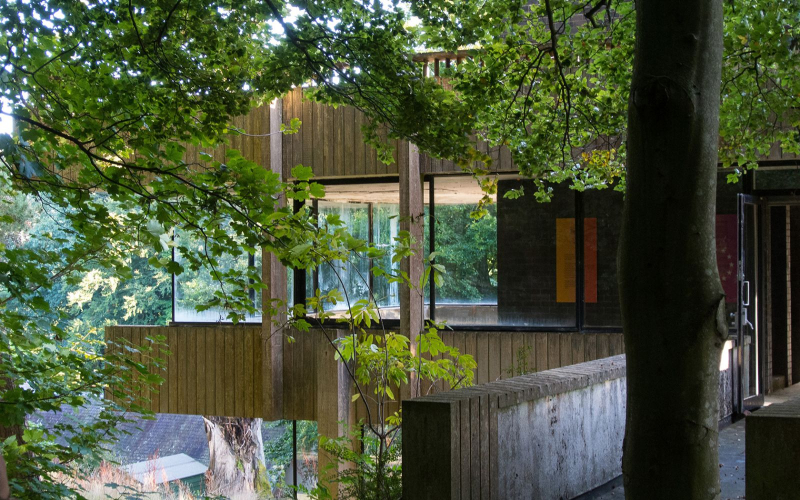
istockphoto -
The Italian Chapel is a lavishly decorated Catholic chapel on the Orkney Islands' Lamb Holm. It was erected during WWII by Italian prisoners of war who were kept on the previously deserted island while the Churchill Barriers to the east of Scapa Flow were being built. Only the concrete foundations of the other buildings in the POW camp remain. The chapel wasn't finished until after the war, and it was repaired in the 1960s and again in the 1990s. It is a renowned tourist destination and a category A listed structure.
It is located in Orkney's Roman Catholic Parish of Our Lady and St Joseph, which is part of the Roman Catholic Diocese of Aberdeen. On the first Sunday of each summer, Mass is held in the chapel (April–September). The chapel, which consists of two Nissen huts linked end-to-end, was built by the convicts using restricted resources in the shape of a tin tabernacle. The corrugated inside was then plasterboarded, and the altar and altar rail were built from concrete left over from the barrier work. Domenico Chiocchetti, a Moena prisoner, did the majority of the interior decorating. He painted the chapel's sanctuary end, and his other inmates adorned the whole inside.
They built a concrete front to cover the form of the hut and disguise the structure as a church. Corned beef tins were used to make the light holders. The baptismal font was created by covering the interior of an automobile exhaust with a coating of concrete. Chiocchetti stayed on the island when his fellow captives were liberated, finishing the decoration of the newly consecrated chapel.
Location: A961, Lambholm KW17 2SF, Scotland
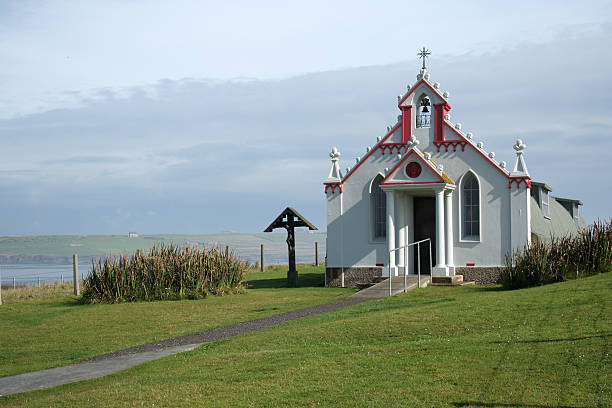
istockphoto 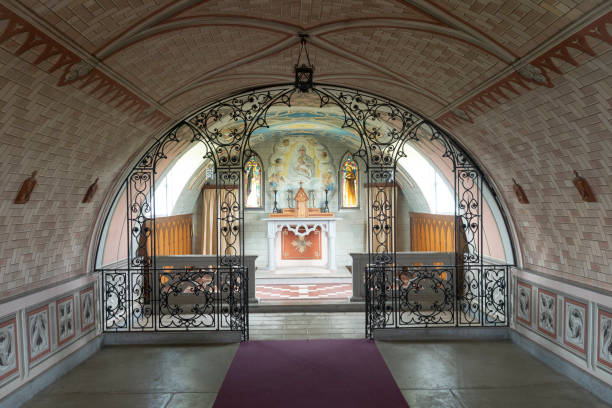
istockphoto -
Culzean Castle is a castle on the west coast of Scotland that overlooks the Firth of Clyde near Maybole and Carrick in South Ayrshire. The National Trust for Scotland presently owns the old residence of the Marquess of Ailsa, the chief of Clan Kennedy. The clifftop castle is available to the public and is located within the Culzean Castle Country Park. From 1972 until 2015, a depiction of the castle appeared on the back side of Royal Bank of Scotland five-pound notes. The castle was offered for rent as of 2021.
Culzean Fortress was built as an L-plan castle by the 10th Earl of Cassilis. He commissioned architect Robert Adam to transform a prior, but more basic, edifice into a splendid country home to serve as his earldom's seat. Between 1777 and 1792, the castle was erected in phases. It has a massive drum tower with an inside circular saloon overlooking the sea, a magnificent oval stairway, and a suite of well-appointed rooms. Margaret Radclyffe Livingstone Eyre, the 1st Marquess of Ailsa's daughter, married Thomas, Viscount Kynnaird on November 14, 1817, in the castle. Margaret would go on to become a well-known philanthropist.
The Kennedy family donated the castle and its gardens to the National Trust for Scotland in 1945. They requested that the apartment on the castle's roof be presented to General of the Army Dwight D. Eisenhower in acknowledgment of his service as Supreme Commander of the Allied Forces in Europe during WWII. The General visited Culzean Castle for the first time in 1946 and stayed there four times, including once when President of the United States.
Location: Culzean Castle, Maybole, Ayr KA19 8LE, Scotland
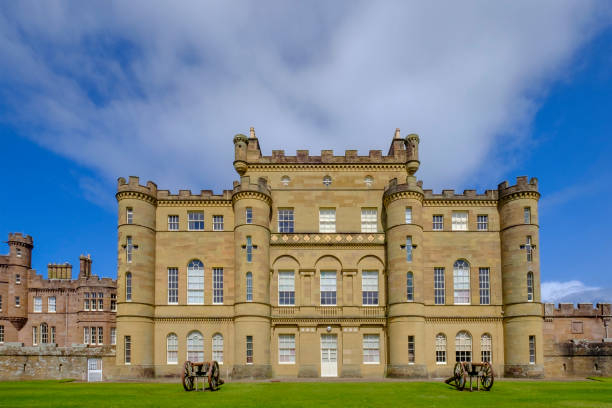
istockphoto 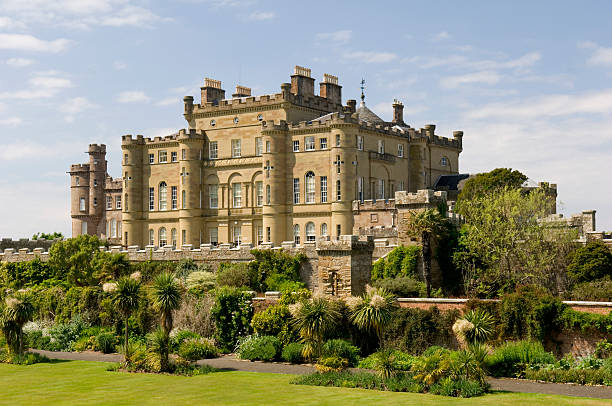
istockphoto -
Kinloch Castle is an Edwardian palace on the island of Rùm, one of the Small Isles off Scotland's west coast. It was built as a private mansion for Sir George Bullough, a Lancashire textile millionaire whose father purchased Rùm as his vacation retreat and shooting estate. The building was started in 1897 and finished in 1900. Kinloch Castle, which was built as a sumptuous getaway, has subsequently decayed.
The castle and island are currently owned by Scottish Natural Heritage, which ran a hostel in part of the castle until 2015 and still gives tourists tours of the principal rooms. The Kinloch Castle Friends Association was formed in 1996 to ensure the building's long-term viability. Kinloch Castle is a category A listed building, and the grounds are designated in Scotland's Inventory of Gardens and Designed Landscapes, a national listing of noteworthy gardens.
The structure was designed by the London company Leeming & Leeming, and the red sandstone used in its construction was delivered by ship from the south of Scotland. The mansion featured its own hydroelectric plant, air conditioning, and telephone system, which were nearly unheard-of luxury at the time. (It was finished in 1906.) Kinloch Castle was furnished with the best paneling and furnishings, much of it supplied by James Shoolbred & Co. of London and was also packed with memories of Sir George's journeys to exotic locales. Overall, it exemplifies Edwardian extravagance in the years leading up to World War I.
Location: Kinloch PH43 4RR, Scotland
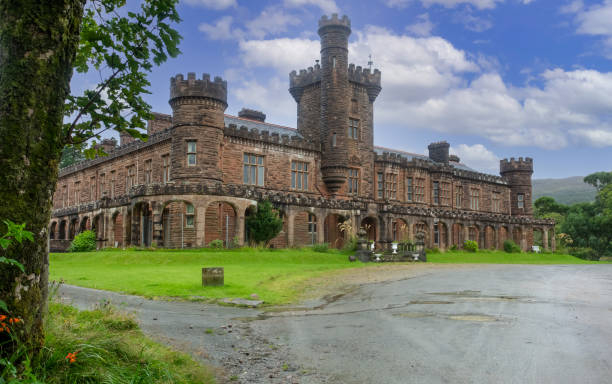
istockphoto 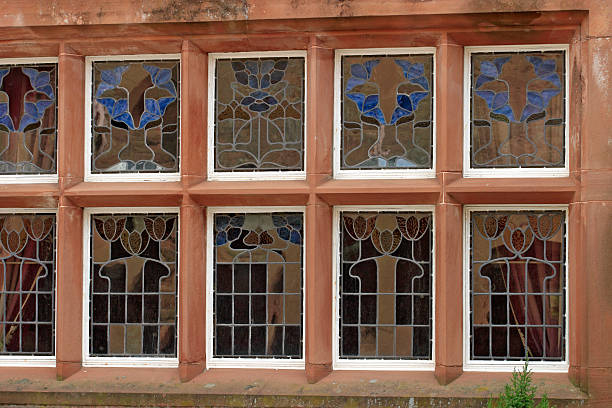
istockphoto
















